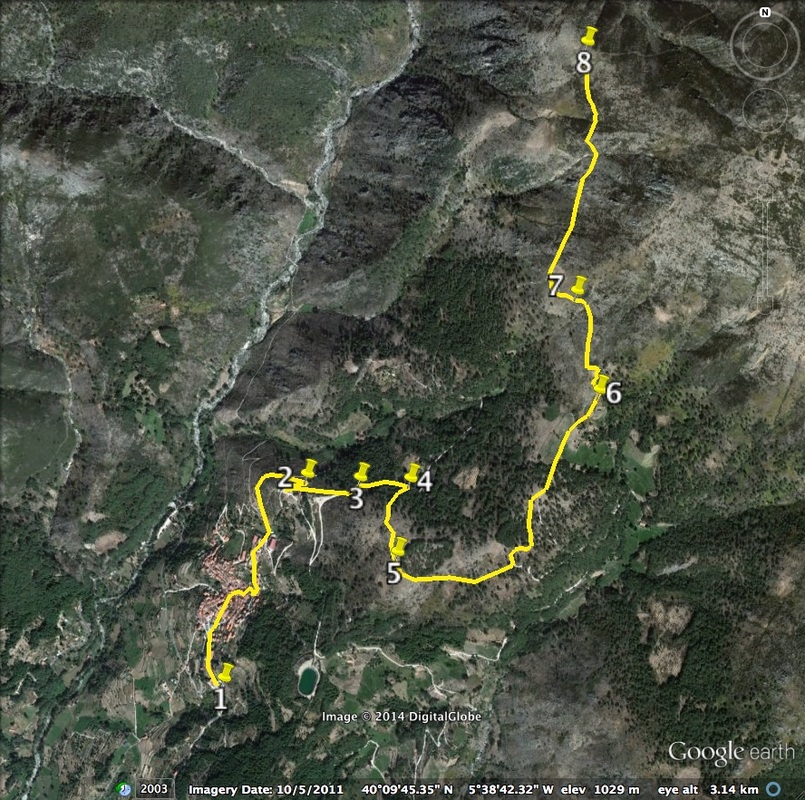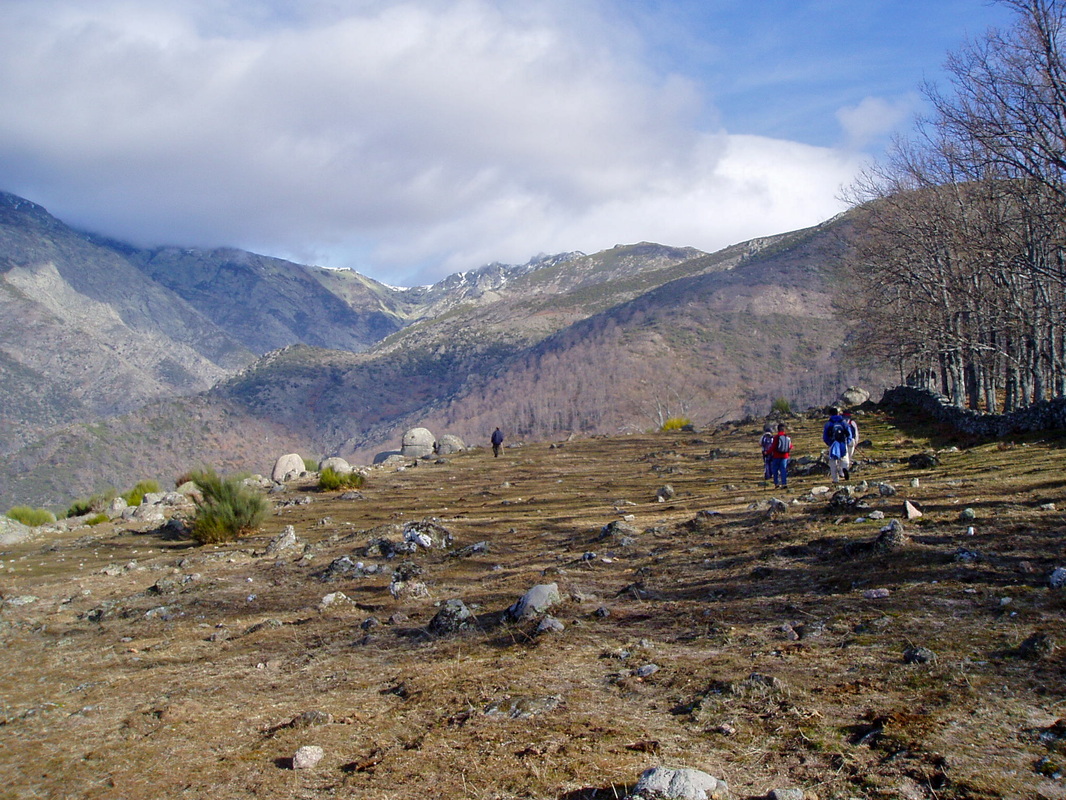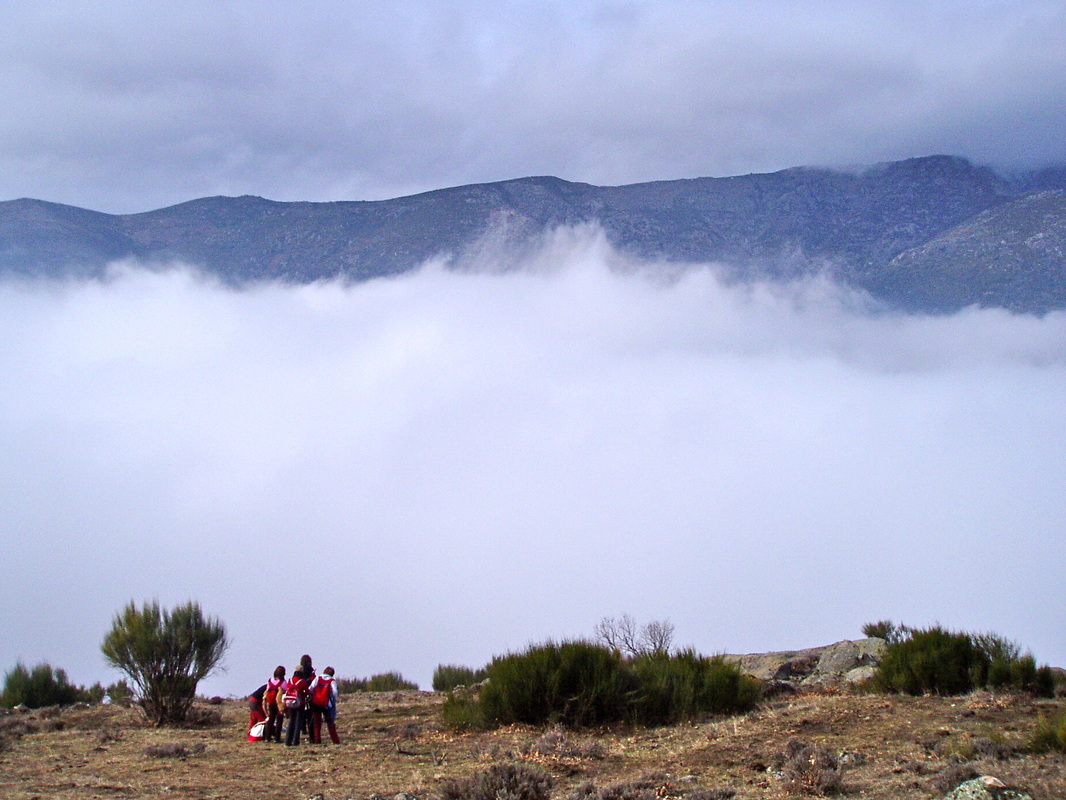|
Guijo de Santa Barbara
Information Guijo de Santa Barbara is a small village, with 525 inhabitants, just north of Jarandilla de la Vera. It is reached by a small road with sharp hairpin bends - but there are passing places. This road comes to the car park in the village where there are route information boards, shops, bars and cafes. The walk is unrelentingly upwards with fantastic views over the valley of the River Jaranda. The route ends at the small Refugio and Hermitage of Our Lady of the Snows where bird watching enthusiasts are rewarded with the sight of huge eagles circling overhead and swooping below in the valley. A tough, but great walk, best tackled at times other than high summer as there is very little shade on the higher stretches of the route. However, check the weather forecast before starting out as mist can come down rather quickly. Start: in the village car park Finish: back at the start Time: 5 hours Distance: 11 kilometres Elevation: lowest 866m, highest 1494m Difficulty: high Route: out and back — map by Google Directions Start in Guijo de Santa Barbara and park in the car park on the left just as you enter the village from Jarandilla de la Vera. 1. N 40º 09’ 13.0” W 05º 39’ 19.8” Follow the yellow and white horizontal stripe sign-posts to come out on to the concrete track leading upward and out of the village. Follow the track around to the right to begin climbing more steeply around sharp hairpin bends. The village quickly lies far below. 2. N 40º 09’ 32.9” W 05º 39’ 04.5” The track develops into a stone paved path at the top of which is a gate. Pass through, shutting the gate afterwards, of course. Turn left. The track develops into a rough lane. It is well sign-posted. It winds up to show views of the big mountains on the left. Enter into an area of deciduous oak trees. 3. N 40º 09’ 32.4” W 05º 38’ 51.1” The lane zig-zags as it rises steeply through the oak wood. Turn sharp right on to a narrow track and continue up through the wood. 4. N 40º 09’ 32.6” W 05º 38’ 41.2” The track comes out on to a hillside which is more open. The path is clear and sign-posted with paint on rocks. Make for a dense wood enclosed by a dry stone wall at the top of the hill ahead. This is a good place to stop to catch our breath and admire the view. In the distance we can just make out the Refugio. “Crumbs! Are we going to walk that high?” “Yes!” 5. N 40º 09’ 22.1” W 05º 38’ 43.9” Continue on with the wood and dry stone wall on the right. The opposite side of the deep valley of the River Jaranda gives a dramatic impression of how high the climb up from the village really is. The going is a bit easier. Pass through an area of less dense, but huge, old trees. This must be a great walk in springtime as well as in the autumn. The track becomes very uneven and stone-paved. Small trickles of water cross the path. The track starts to go up sharply once more. 6. N 40º 09’ 44.7” W 05º 38’ 06.0” Continue up. Most of the oak trees are now below and the terrain is both more rocky and more covered in scrub and wild broom. The track is a clear single track although in places there is evidence that there are ‘off-track’ routes. Stick to the track on the ascent. 7. N 40º 09’ 59.7 W 05º 38’ 09.8” The track seems unrelenting in its ascent but the Refugio is in sight. Negotiate stream beds that cross the track that may be anything from dry to deep water to ice — depending on the season. The final track to the Refugio is very exposed and can be cold in winter. 8. N 40º 10’ 35.3” W 05º 38’ 08.7” At the summit, allow plenty of time for exploration and bird-spotting because the return walk is much quicker than the ascent. Have a picnic and explore both the Refugio and the Hermitage. Huge birds of prey may circle overhead but also fly in the valley below. Use binoculars. Then, start the return. Keep to the track but there are lower, ‘off-track‘ routes that also follow the line of the Jaranda Valley and come back to the village. Descend lower and re-enter the oak wood. Still keep to the path and before too long the final bends into the village come into view. For me, it is a really great walk — I love the mountains. Photos: January — we walked in poor conditions but we were a group |



